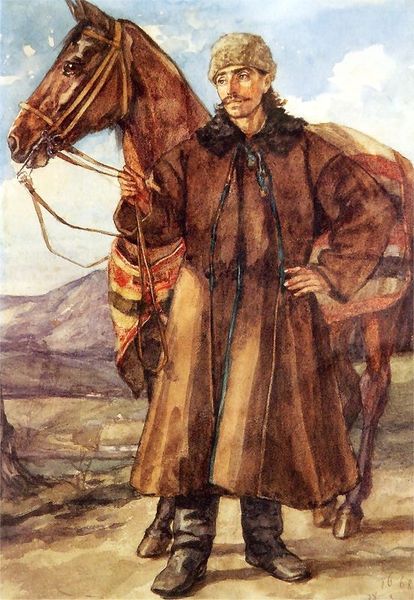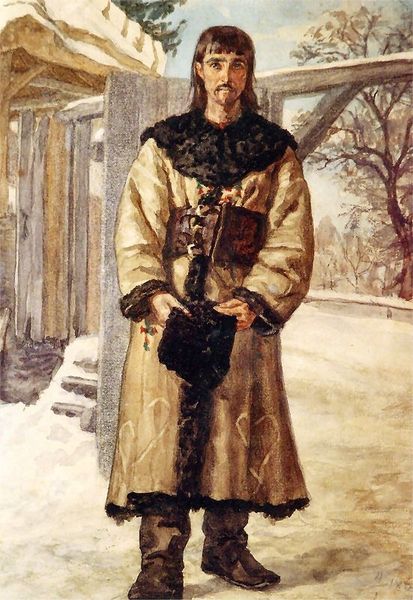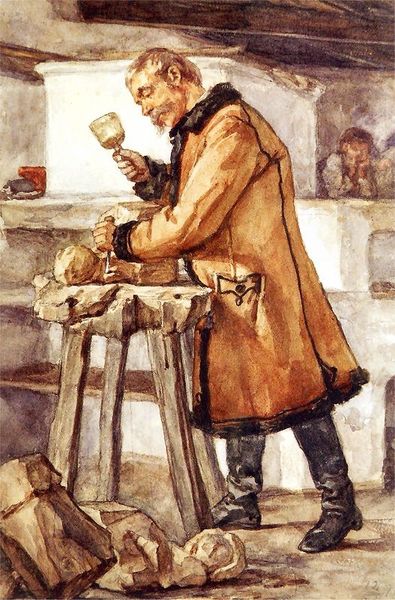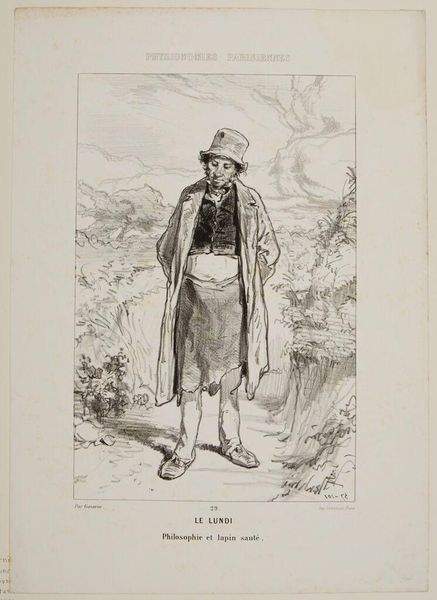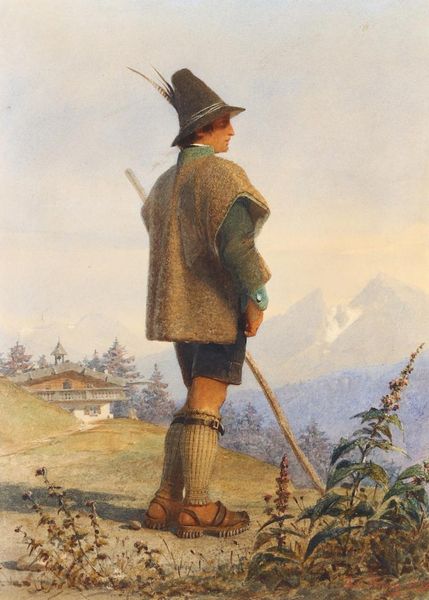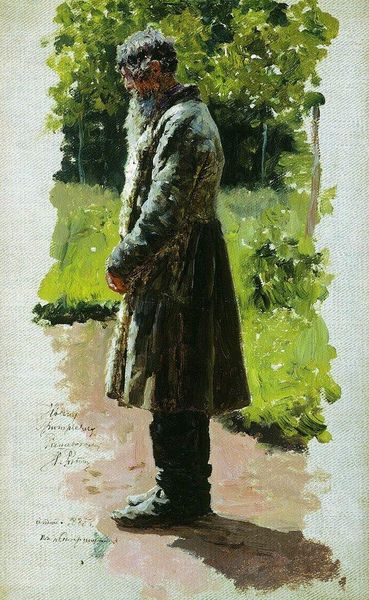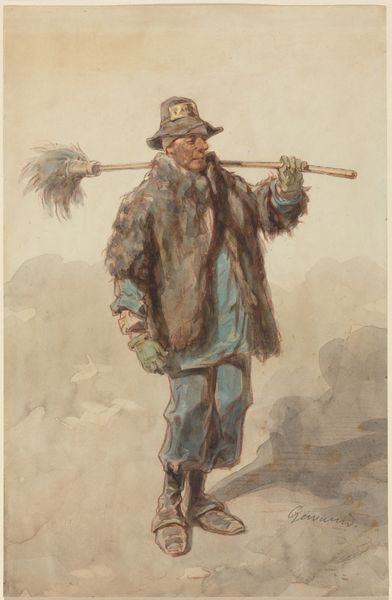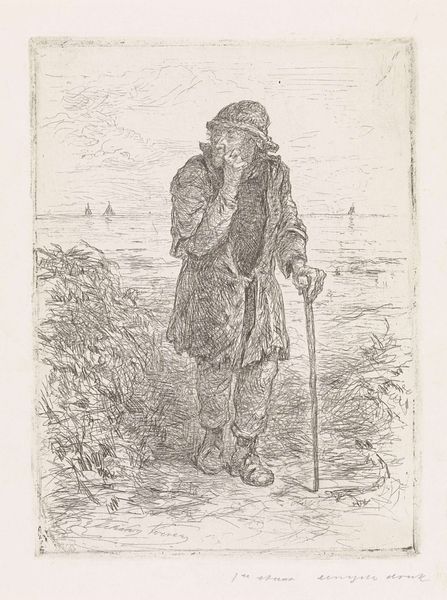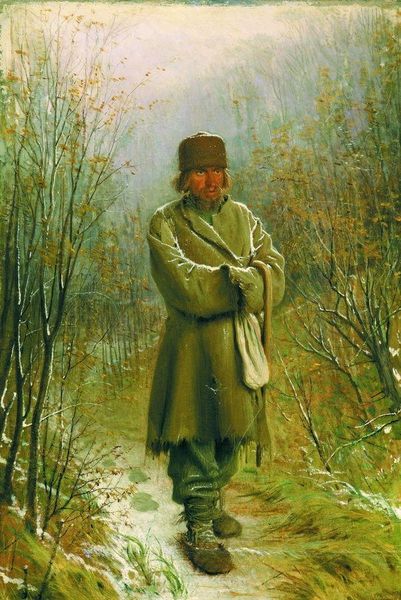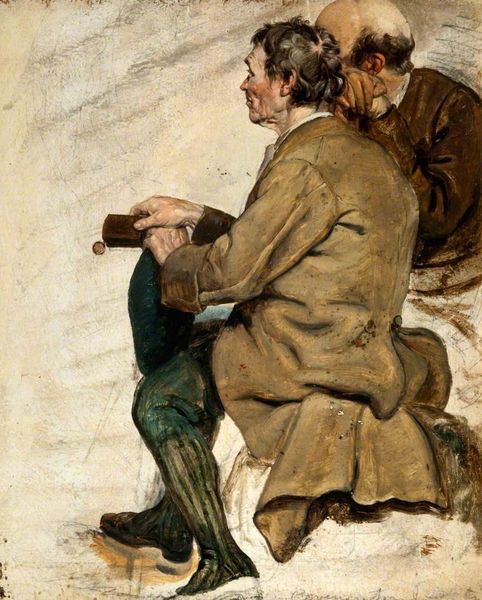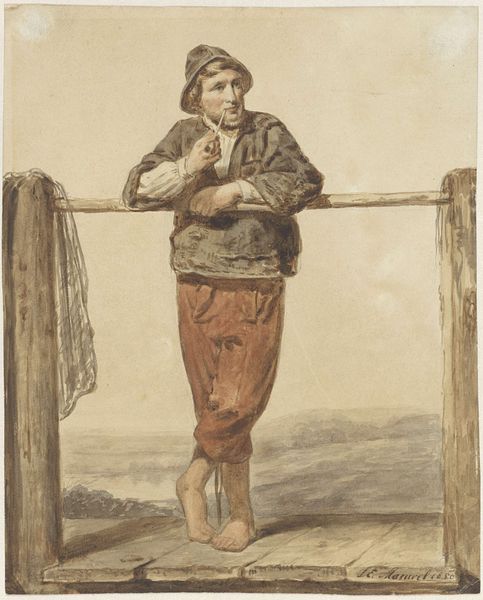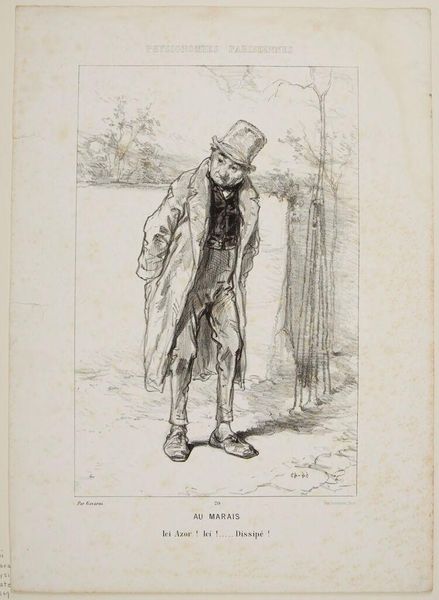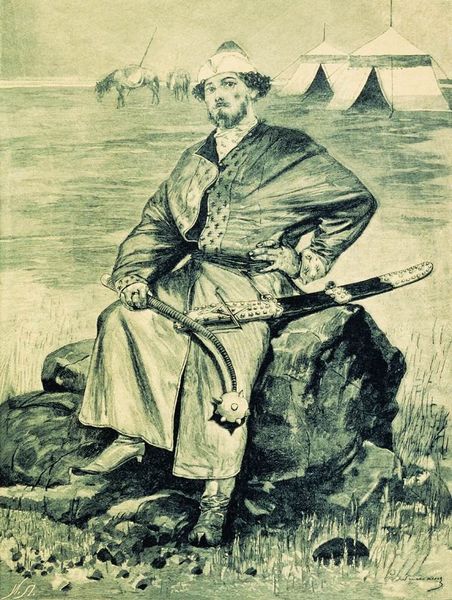
Copyright: Public domain
Editor: This is "Chłop Ukraiński," or "Ukrainian Peasant," by Henryk Rodakowski, created in 1877, and appears to be done in watercolor. The subject matter seems to me like a clear interest in realistically portraying the peasantry, without the romanticizing of idealized landscapes that was common during this period. What do you make of it? Curator: I find myself considering the materials first. Watercolor, typically seen as a medium for landscapes and quick sketches, is used here for a full-length portrait of a Ukrainian peasant. What does it mean to use this ‘lesser’ medium, often associated with leisure, to depict labor? Editor: That's a great question. I never thought about it that way. What are you suggesting about the materials? Curator: The choice suggests a critical viewpoint. Rodakowski deliberately elevates a common subject through artistic labor, and simultaneously challenges conventional hierarchies by employing an unexpected material. Is he suggesting that ‘high’ art can depict those typically deemed unworthy by society? Or is he subtly undermining the academic definition of art itself? Look at the rendering of the clothing: notice every stitch seemingly depicted on his tunic and every crease meticulously detailed in his coat and boots, indicative of how materials shape a worker's very being. Editor: I'm thinking about the man's clothing now. He appears sturdy and grounded in his surroundings, yet he also gazes into the distance as if thinking of something or headed toward some place that is other than the road that he is traveling on. Curator: Indeed. This watercolor presents labor and rural life without romanticizing it. Consider the material realities – the artist, Rodakowski, and the peasant he portrays both exist within specific social and economic systems. How are they intertwined here? Editor: Now I see how thinking about Rodakowski’s labor making this work reveals how value is assigned to artistic skill, as well as how this artistic approach brings an honesty to how Ukrainian people lived and worked at the time. Curator: Exactly. By examining these layers, we uncover the profound relationship between material, making, and meaning.
Comments
No comments
Be the first to comment and join the conversation on the ultimate creative platform.
